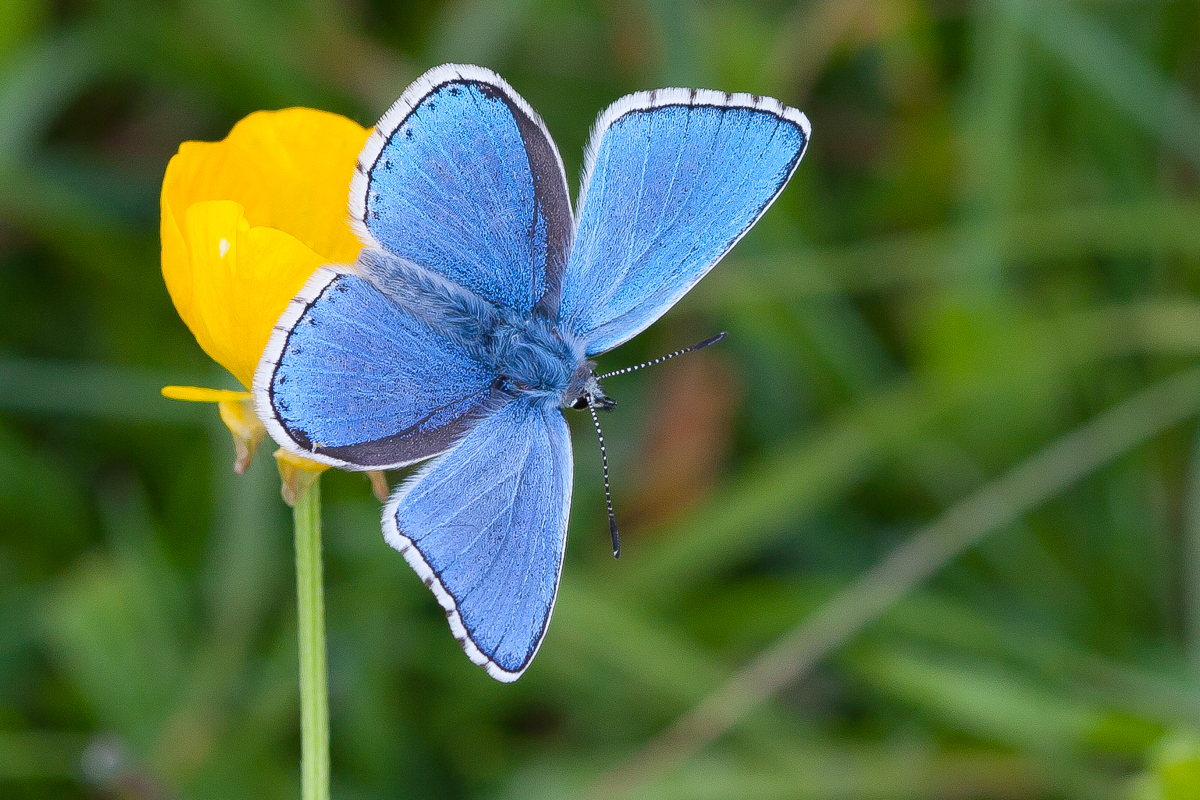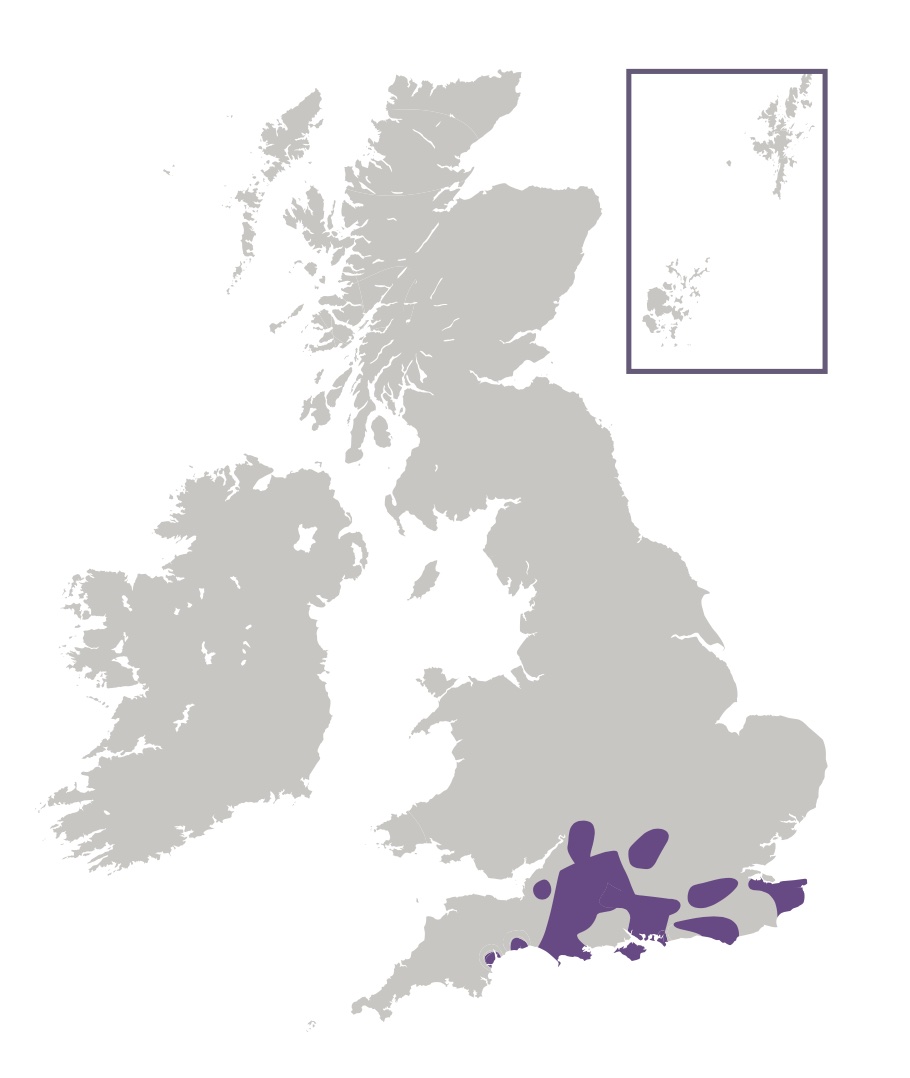
Photo © Peter Eeles
The Adonis Blue is a species of chalk downland, where it may be found in warm, sheltered spots. The male Adonis Blue has brilliantly-coloured blue wings that gives this butterfly its name, and can be found flying low over vegetation, seeking out the less-conspicuous females that are a rich chocolate brown in colour. Like its close relative, the Chalk Hill Blue, the distribution of this species follows the distribution of Horseshoe Vetch which, in turn, follows the distribution of chalk and limestone grassland. However, this species has a more restricted distribution than the Chalk Hill Blue, indicating more precise habitat requirements. This butterfly can be found in large numbers where it does occur, such as the chalk downloads of Dorset, South Wiltshire, West Sussex, East Sussex and East Kent. This species is absent from central England, northern England, Wales, Scotland, Ireland, the Isle of Man and the Channel Islands. This species lives in discrete colonies.
The sexes are strongly dimorphic; the males being a magnificent electric blue, and the females being a chocolate brown. The adults live in concentrated colonies and appear to have limited powers of dispersal. However, on good sites, this species can be found by the hundred. This species can be found roosting communally at night.

This is a warmth-loving species, preferring sheltered, south-facing slopes. This species is found where the turf is closely-cropped, possibly because it provides a higher temperature for the immature stages or because this is a requirement for the ant species that attend the Adonis Blue larva and pupa. The loss of grazing by rabbits, for example, causes the sward to become overgrown and can render a site unsuitable for this species.
Adults feed primarily on Horseshoe Vetch (Hippocrepis comosa), knapweeds (Centaurea spp.), ragworts (Jacobaea spp.), thistles (Carduus spp. and Cirsium spp.) and Wild Marjoram (Origanum vulgare).
The primary larval foodplant is Horseshoe Vetch (Hippocrepis comosa).
